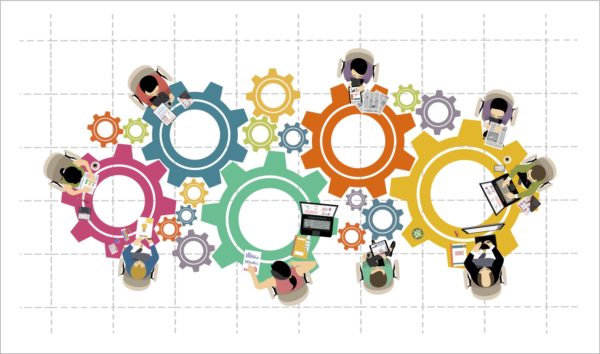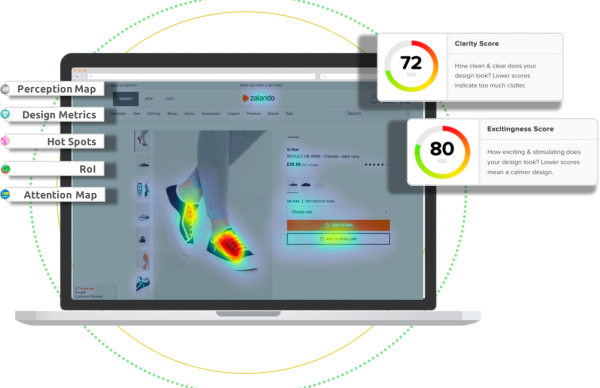We value your privacy
This website uses cookies to ensure you get the best experience on our website.
 Skip to main content
Skip to main content
This website uses cookies to ensure you get the best experience on our website.
In my article, Building a culture of experimentation, I talked about the importance of bringing about a change in attitude to catalyse a culture of learning and to stimulate growth.
However, not every team is ready to make that leap. I’ve developed 5 categories of questions that you can use with your team to determine your readiness for change.
There are no right or wrong answers. Instead, the questions are designed to provoke thought and to initiate a conversation about the way you work now, and the way you want to work in the future.Firstly though, let’s look at the status quo.
Historically, teams would determine that they wanted to build a feature, then go through the standard flow of Design > Build > Test.
Then, they’d launch the feature to the market and either iterate or move on to the next item on the list.
While this is a simplified take, the point I am trying to make is that leap-of-faith assumptions (i.e. the things we have to believe for this to prove to be valuable) are implied, and not part of the project’s explicit risk log (in most cases, Risk was based on delivery complexity but not end-user acceptance or product market fit).
In the brave new world of Lean methodologies, we can extract and frame this risk, seeking to mitigate it far earlier in the cycle, using different methods to validate our hypotheses.
We evolve from builders to scientists, seeking to rigorously test every aspect of what we want to build in order to fail early, regroup and re-attempt.
Below, I have set out certain “pillars” that will support a culture of experimentation.

In my personal view, one of the key pillars of building a successful Agile and Lean team is Cross-Functional teams.
By bringing a group of people together with different functional responsibilities and skill sets, united by a common goal, team members take a more hands-on role in the end-to-end process by sharing and collaborating with others. This is a different dynamic to where the delivery team presents their work to stakeholders who critique it and give feedback. Instead, everyone owns the challenge and makes themselves part of the solution.
It is therefore vital to have representatives from each function that could, in theory, block your path forward. E.g. if you work in a bank, don’t go to the compliance team at the end of the project and hope to get it approved – bring them on the journey with you and actually make them part of the team.
This fundamentally changes the dynamic from “you vs. us” to “we”. In another example, have someone from marketing actually in your team, working with you to help define the outcomes, spec the feature and tie it back to the commercial goals that have been given to them in their function.
N.B. In a truly cross-functional organisation, goals are aligned and each person can identify their role in helping achieve them. If you feel that your own functional goals are at cross-purposes with other teams, then you most likely have an alignment problem higher up the organisation.
By working cross-functionally, everyone starts to appreciate a different perspective and can start to act more holistically in the best interests of the team and wider company.
Finally, don’t forget that cross-functional teams generally should have a mix of seniority levels in them. Include senior stakeholders – you will get a different, more strategic perspective which will transform the way you see the work you are doing, whilst also building mutual empathy and further skills within the team.

In the early days, I made the mistake of being too involved in the details of experimentation. This took ownership away from the team and reduced free thinking.
Free thinking is incredibly important. It means that people have to fully understand and own the problem. When they do that, they then fully own the activities to solve it.
If you are a product leader who is wondering how to improve productivity within your team, then bear this in mind! As the leader, you have to change your own mindset. This is where you really start to understand the notion of creating a culture where “failure” is acceptable. Let the team get on with solving the problem. Accept that they will make mistakes and may take a little longer to get where they need to initially. However the value is in the medium term once the team has built “experimentation muscle”. I.e. simply put, they will get better and better at experimenting quickly, learning and moving on.
And while we are on the topic, it’s not “failure” – it’s a lesson learnt. You wouldn’t tell someone taking up tennis that they failed just because they lost a game or hit the ball in the net would you? You would encourage them to try and try again. And in due course they start hitting the ball consistently over the net and winning games. It’s no different in work.
And what if you don’t trust them to improve or to learn? Then the issue is with you. You either hired the wrong people or you need to learn to trust others and accept that you don’t always know best! Which leads me to the third pillar…

To be blunt, if you get this wrong then you are fighting an uphill battle. Hiring the right people means they:
How do you know if you have the right people in your team? Ask yourself if they fit the above criteria. Look at each person like they are part of the most important jigsaw puzzle you ever built.
So, on to the part about Readiness. Use these as conversation starters to determine openness and willingness to shift the culture to one of learning:
If you take the answers to the above, you will start to form a picture of whether or not you are ready. In most cases you will have some of the above in place. Great news! What you are hopefully therefore appreciating is that laying the foundations is a key part of this. Without them, this will fall over (pun intended, although not a great one, I’ll admit).
If you made it this far, thank you! I hope you found this provocative and relevant to your own situation. Feel free to comment and challenge any view I have shared. There are many different ways to approach this. I would welcome any suggestions and contributions.
So whether you’re just starting your transformation journey, or you’d like to discuss some of the unique intricacies of your organisation, I’d love to hear about it.



Check out our latest top tips on how you can use EyeQuant to spy on your competitors, analyse mobile...
Read more
In this article, we’ll discuss our data-driven approach to CRO, including fundamental tools and principles that will help to...
Read more
From maintaining audit trails to preparing your “toolkit”, the key strategies to successfully manage senior stakeholders in any design...
Read more